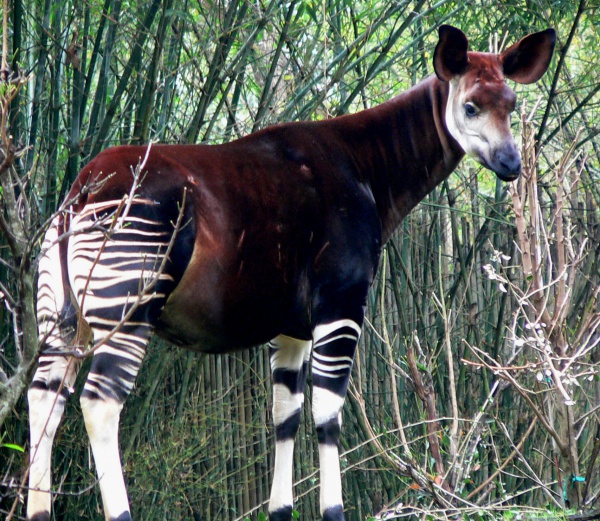Facts About Okapi
The okapi, often referred to as the forest giraffe, Congolese giraffe, or zebra giraffe, is a captivating mammal indigenous to the northeastern region of the Democratic Republic of the Congo in Central Africa. Despite its zebra-like stripes, the okapi is more closely related to the giraffe. Both animals are the sole extant members of the Giraffidae family.
Standing around 1.5 meters tall at the shoulder, the okapi measures approximately 2.5 meters in body length and weighs between 200 to 350 kilograms. Its distinctive appearance features zebra-like stripes on its legs, a reddish-brown coat, and large, flexible ears. Males have short, horn-like structures called ossicones on their heads, while females do not.
Okapis are solitary herbivores primarily consuming tree leaves, buds, grasses, ferns, fruits, and fungi. They are diurnal, meaning they are active during the day, and inhabit canopy forests at elevations ranging from 500 to 1,500 meters in the Democratic Republic of the Congo. Regrettably, the okapi is classified as endangered by the International Union for Conservation of Nature (IUCN) due to threats such as habitat destruction, poaching, and illegal mining. To address these threats, the Okapi Conservation Project was established in 1987.
The okapi's scientific name, Okapia johnstoni, commemorates its discovery in the early 20th century. Dubbed the "African unicorn" the okapi garnered attention through explorers like Henry Morton Stanley and Sir Harry Johnston. Often considered a living fossil, the okapi has existed for millions of years. Genetic studies indicate that the last common ancestor of giraffes and okapis lived approximately 11.5 million years ago.
In terms of behavior, okapis are predominantly solitary. Males mark their territories, while females tend to remain in specific areas. They are uniquely adapted to their tropical habitat and have a specialized diet focused on understory vegetation. Okapis have a long gestation period of about 440 to 450 days, typically giving birth to a single calf. Calves are hidden and weaned at around six months of age.
Okapis are found exclusively in the Democratic Republic of the Congo, predominantly in the northeast. They inhabit canopy forests at moderate altitudes and reside in protected areas like the Okapi Wildlife Reserve and Maiko National Park. Despite these protections, the species faces significant threats, leading to a decline in their population.
Conservation efforts for okapis include the Okapi Conservation Project, captive breeding programs in zoos worldwide, and international collaborations to maintain genetic diversity and safeguard the species. Accredited zoos in North America and Europe play a crucial role in managing captive okapi populations and supporting conservation initiatives.

 Republic of the Congo
Republic of the Congo